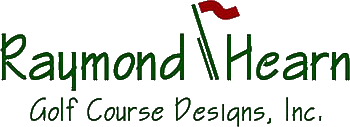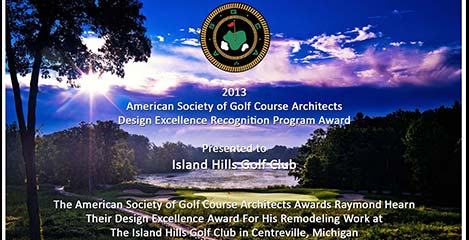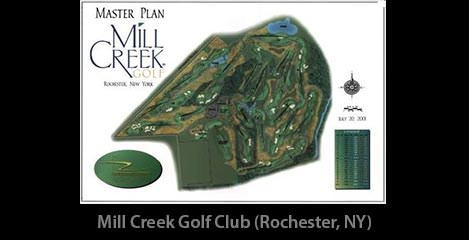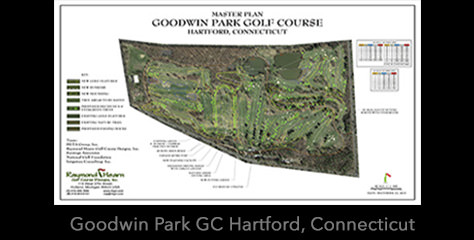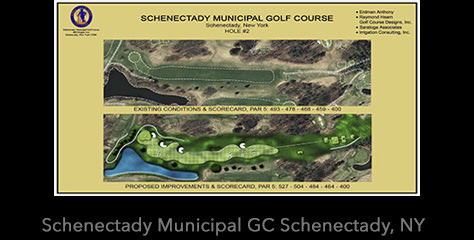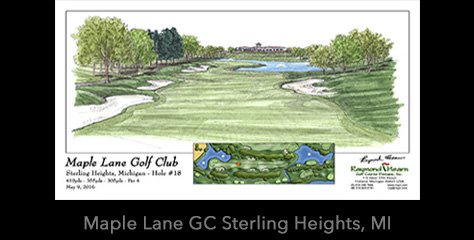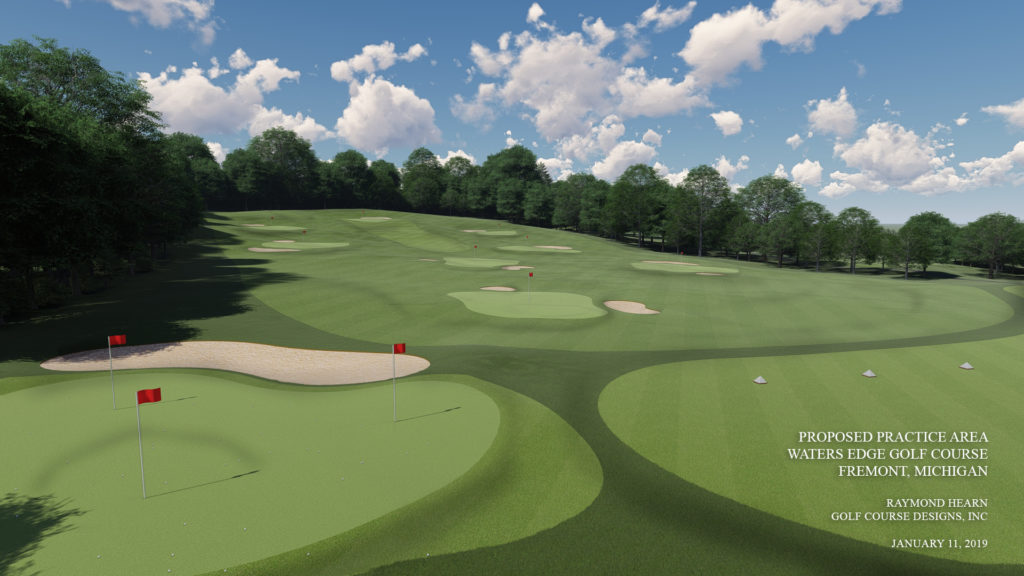
Proposed Practice Area at the Waters Edge Golf Course in Fremont, MI
Practice facilities are often overlooked, but we feel they have great value and importance in a golf operation. Most courses or clubs are looking to attract more golfers or members, and in the case of resorts, more rooms and tee times occupied. The battle cry of the industry remains: “Let’s grow the game.” To grow the game, we must introduce potential players or future members to the game, and there is no better way to accomplish this then through an upscale practice facility. Resort owners have understood this for years, but many golf courses owners and private clubs have not seen the light in this case. Let’s tackle the common problems we have encountered in our 22 years at Raymond Hearn Golf Course Designs: The main tee: The practice tee or the main-use tee at many courses we have visited is usually too small, and the superintendent is charged with the impossible task of constantly providing healthy full turfgrass to use. We like to see between 25,000 to 45,000 square-feet of surface area to give the superintendent a chance to allow divots to grow back via topdressing and seeding. Obviously, many facilities don’t have this room, but most qualified golf course architects can usually assist you in gaining 10 to 20 percent more teeing areas by adjusting grades and maximizing the surrounds to the tee. We have developed ways to gain an additional 20 percent of teeing area at clubs that were certain there was not enough room to expand. Other problems that plague practice tees, including misalignment, uneven surfaces, poor drainage, lack of proper soils, improper turfgrass, tree and root competition, and more, have been solved, too. The lesson tee: This is an amenity that is often missing. Golf can be an intimidating game and the best way to introduce “first timers” is with a private lesson tee away from other golfers on the main tee. Many courses I visit have room at the end of their practice range for a lesson tee. We recommend that the lesson tee be located at least 350 yards from the front of the main use tee at the opposite end of the range. It can be much smaller in overall surface area — 10,000 square-feet is a good goal. The practice green: A good practice green is vitally important for golfers to practice and calibrate their putting stroke before play. The practice greens on the courses I visit typically exhibit lack of sufficient surface area, poor construction and design, poor drainage, lack of proper soils, improper turfgrass, tree and root competition, etc.. On a course with undulating greens, I often see dead-flat practice greens. Worse yet, I’ve seen undulating practice greens while the greens on the course are flat. We feel the practice green should mirror the putting surfaces found throughout the course. Variety is an important element. The practice green should allow for a variety of slopes similar to those on the course’s 18 holes. A good rule of thumb is to provide 8,000 to 15,000 square-feet of surface area. The practice bunker(s): Bunker shots need to be practiced as much as any other aspect of the game. We recommend two practice bunker areas – a greenside and a fairway bunker. In certain cases, we have achieved both in one bunker. The depth of these two practice bunker areas should reflect the depths of greenside and fairway bunker shots found on the golf course. Special attention is needed in locating these proposed amnesties as many sculled shots will leave the bunker area and enter adjacent use areas. Bunkers should allow for 12-15 foot of spacing in each bunker to allow for multiple users at the same time. Targeted size of practice bunkers is a minimum length of 75 feet and at least 30 feet of depth when possible. Smaller sizes also work, but you obviously limit the number of simultaneous users. Chipping areas: We recommend a chipping area of approximately 20,000 square feet or greater if room allows. If space on the practice facility is limited then the chipping area can be added to the practice green as we did in a project at Traverse City Golf & Country Club in Michigan. When the two amenities are combined the golf professional must regulate and monitor play on each area so as to minimize competing uses. Assigning certain cupping areas on the practice green for the chipping area is a good idea so that those warming up with practice putts avoid this area. Construction of the chipping area should adhere to the same high construction standards as the practice tee. The “Cadillac” of chipping areas is a chipping course that can occupy anywhere from 1-5 acres. The chipping course would offer golfers a wide variety of chipping lengths to practice from and typically involve individual chipping greens set up as 3-hole to 9-hole play routes. Target greens: There is no way to better improve a practice facility than adding target greens. It amazes me that the vast majority of facilities, including private clubs, exhibit a lifeless range with colored poles indicating targets. It is boring. The monotony of practicing shots into a flat field with poles chases people from practice. Most golfers tell me they visualize hitting to an actual green. My suggestion is to stop making them visualize and build actual targets. These target greens can be constructed out of topsoil and are very inexpensive. The key here is to make them at least 4000 square-feet in size – the larger the better — and exaggerate the slope in the green from front to back about 10 – 15 percent to maximize the amount of surface area that is visible from the practice tee. At Traverse City Golf & Country Club the new greens added definition and beauty to the range, and members and guest love being able to truly visualize shots. Target greens almost make it seem like you are hitting to a real golf hole. Target fairways and target bunkers: Don’t stop at target greens and instead try and emulate actual golf holes on the range. The way to properly accomplish this is with target fairways leading to the target greens and target bunkers surrounding the greens and the fairways. It makes for the ultimate practice experience by assimilating actual golf holes. With the target bunkers, drain them as you would a bunker on your course with a bunker liner. Exaggerate the bunker slope for maximum visibility from the tee (10 to 15 percent, keep the bunker shallow (6 inches) and fill the bunker with a limestone rock close to the color of the actual sand on the golf course. With this construction the ball retriever used on the range can be driven through the “bunkers” retrieving range balls without damaging bunker edges. From the tee, golfers will swear the bunkers are filled with sand. End and sides of the range: We recommend mounds and tree plantings surrounding the end and sides of the range, and in certain instances safety netting. Specific dimensions for length and width of a range as well as the adjacent buffer zones varies from project to project due to topography, wind conditions, existing vegetation density height, altitude, etc. Once a club has addressed the problem areas or made additions above, the proper drainage and irrigation coverage for the practice areas is a must. New turfgrass species selection can also help minimize irrigation, fertilizer and fungicide needs. It surprises me that many owners and clubs take short cuts and reduce proper and proven construction methodologies on practice facilities. The result is usually future problems. A practice facility should always be built to the same high standards as the adjoining golf course. Also, since the practice facility covers a large land mass, it also must be accounted for in terms of aesthetic impact. In many cases it is in full view from the clubhouse. The open field of colored poles doesn’t work. Proper design elements will make the aesthetics equal to those on the golf course. Do we really need a practice facility? Yes, many times over. Can they help grow this great game? Yes, many times over.
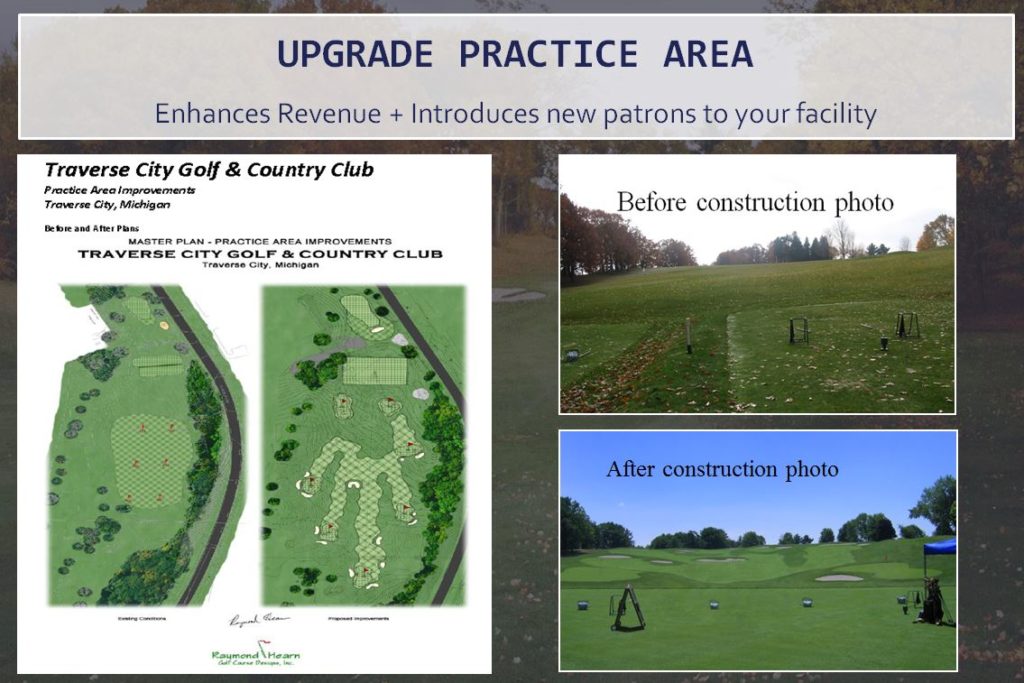
Practice Area Upgrade at Traverse City Golf & Country Club, Traverse City, MI
